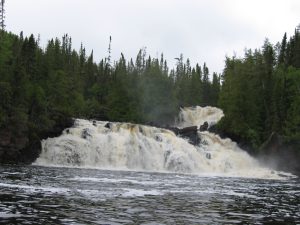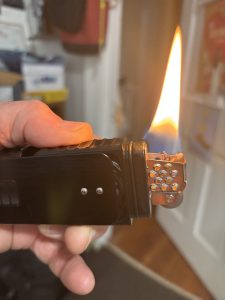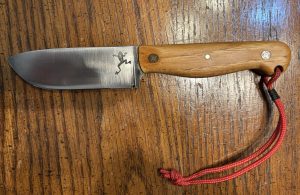
MURDER AT WEDDING CAKE FALLS
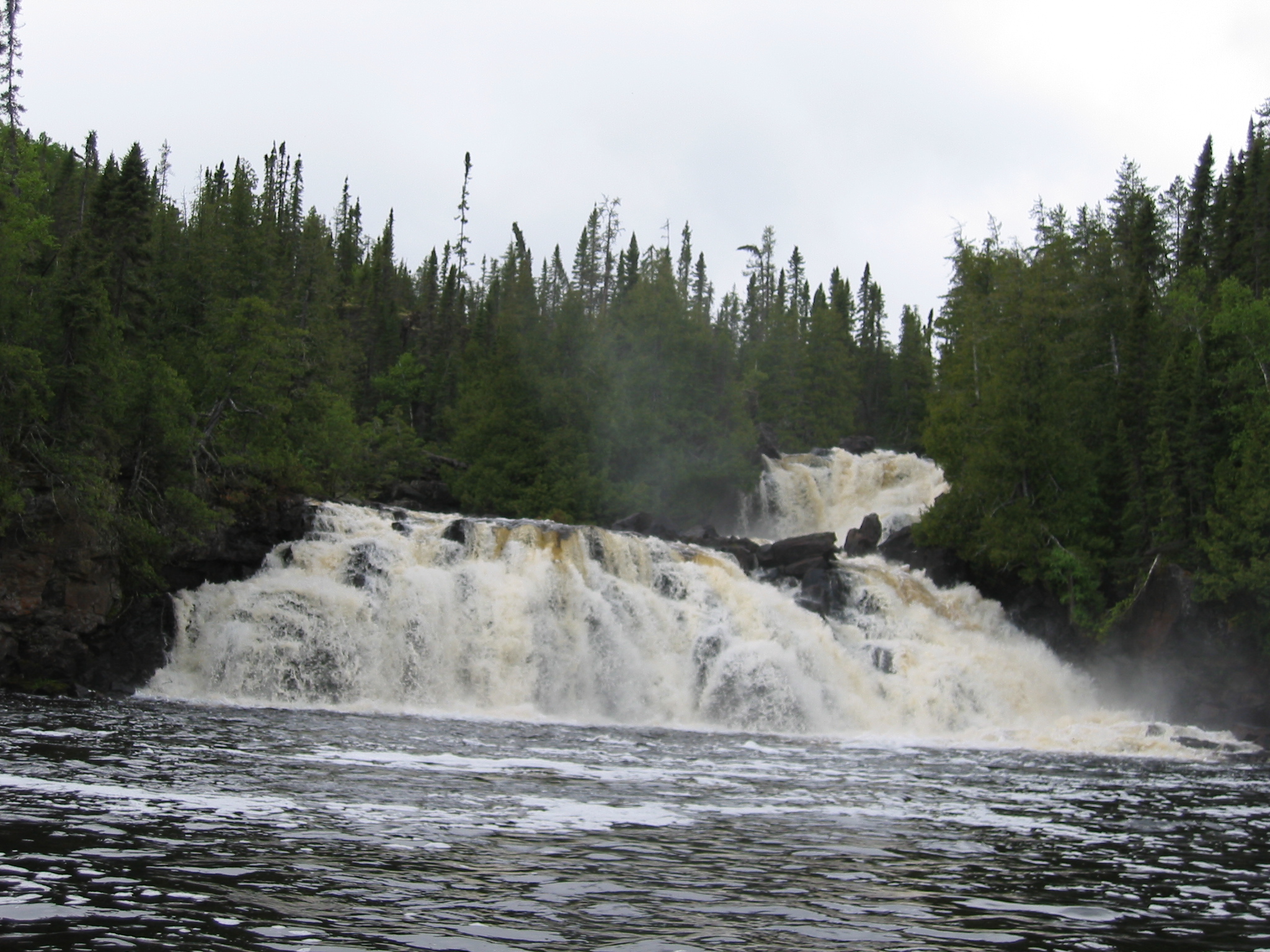
Third and final pitch of Wedding Cake Falls*
Just west of Armstrong, Ontario, in the rocky shield country of Canada, lies a spectacular river called the “Kopka”. Along its length is one of the most magnificant falls within the tree line. Here, at what was once called “Mink Bridge Portage,” the entire contents of the river spill tumultuously downward 250 feet in three successive drops, creating one of the most spectacular white water areas on the continent. You can stand at the top of a high hill near the first falls and watch the stair-step show in its entirety. As one Voyageur commented: “It is the land of the lost.”
Getting canoes and gear around the falls is interesting. At the start, there’s a mile long portage which descends about 200 yards through waist high boulders of a long abandoned stream. The rocks are so numerous and large that most people cannot carry even a light weight canoe over them. I’ve done the Kopka four times and so have adopted the following system which, so far, has not resulted in any broken legs.
First, everything is carried over the reasonably level trail to the start of the boulder field. From here, one or two long-legged men who have good balance, portage the canoes the rest of the way while an assistant stands by at the bow and stern. One slip, and a sprained ankle is certain. Even with help, the route is tortuous and precarious. I have seen people carry the boats alone, but it is very dangerous, and in rain, impossible.
The portage ends at the base of a large rapid, in rushing water and boulders. Loading gear and casting off requires good balance, canoeing know how, and help from a friend.
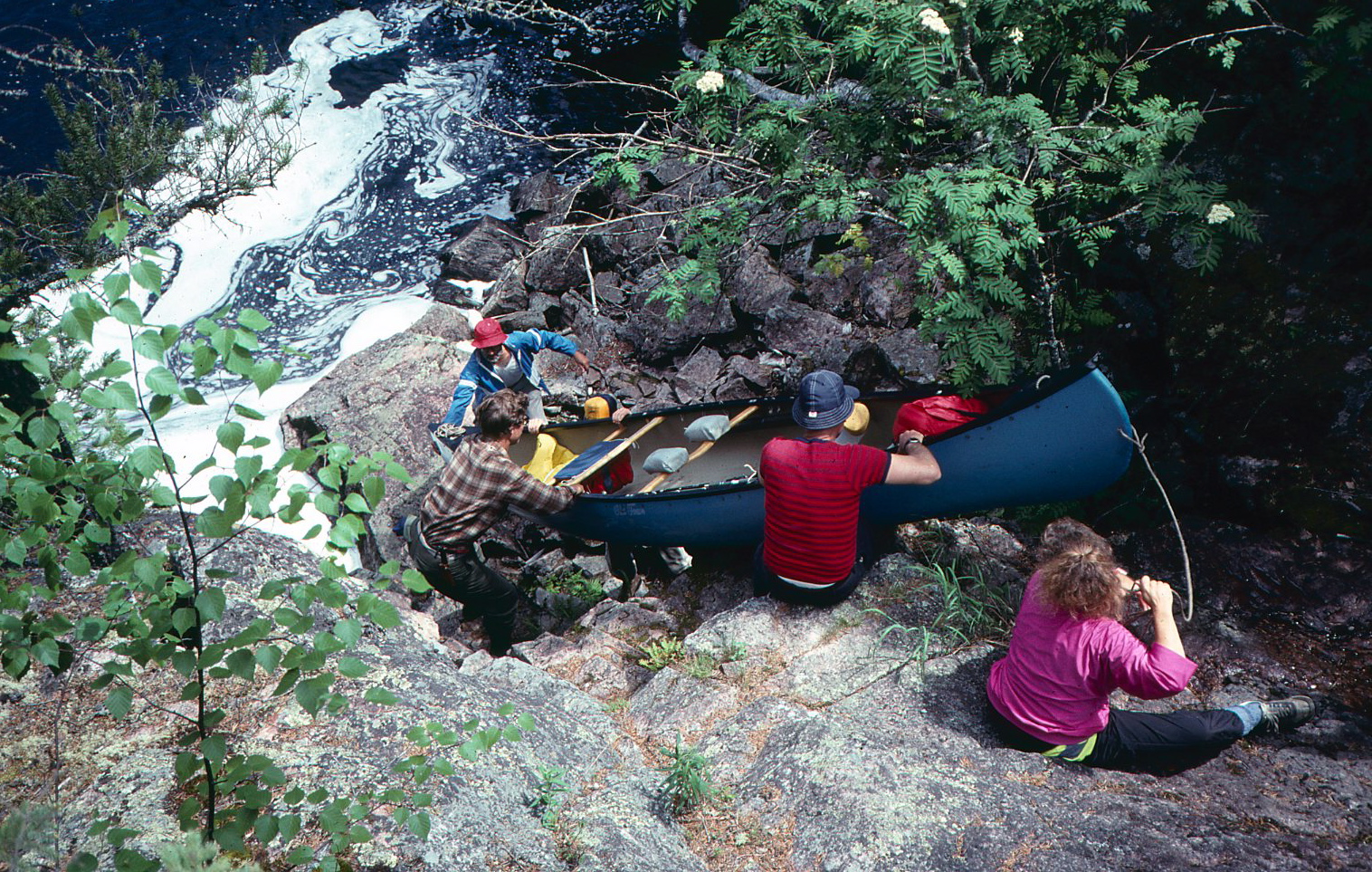
Lowering canoes into the river after one of several portages around Wedding Cake Falls*
A half mile of paddling brings you to the first falls, after which comes two more portages, one of which involves lowering the canoe 20 feet straight down a slick canyon wall. Then, you paddle across a small pool and begin the last and most difficult carry. The portage ascends a small hill, winds tortuously upward onto a ridge then ends abruptly 70 feet above the river at the lip of broken out cliff. You can claw your way down to the river without a safety rope, but it is very dangerous. A strong, 100 foot rope is needed to winch the canoes and gear down to the water. I can’t imagine anyone doing it alone, or canoeing upriver, even with a team of experienced friends.
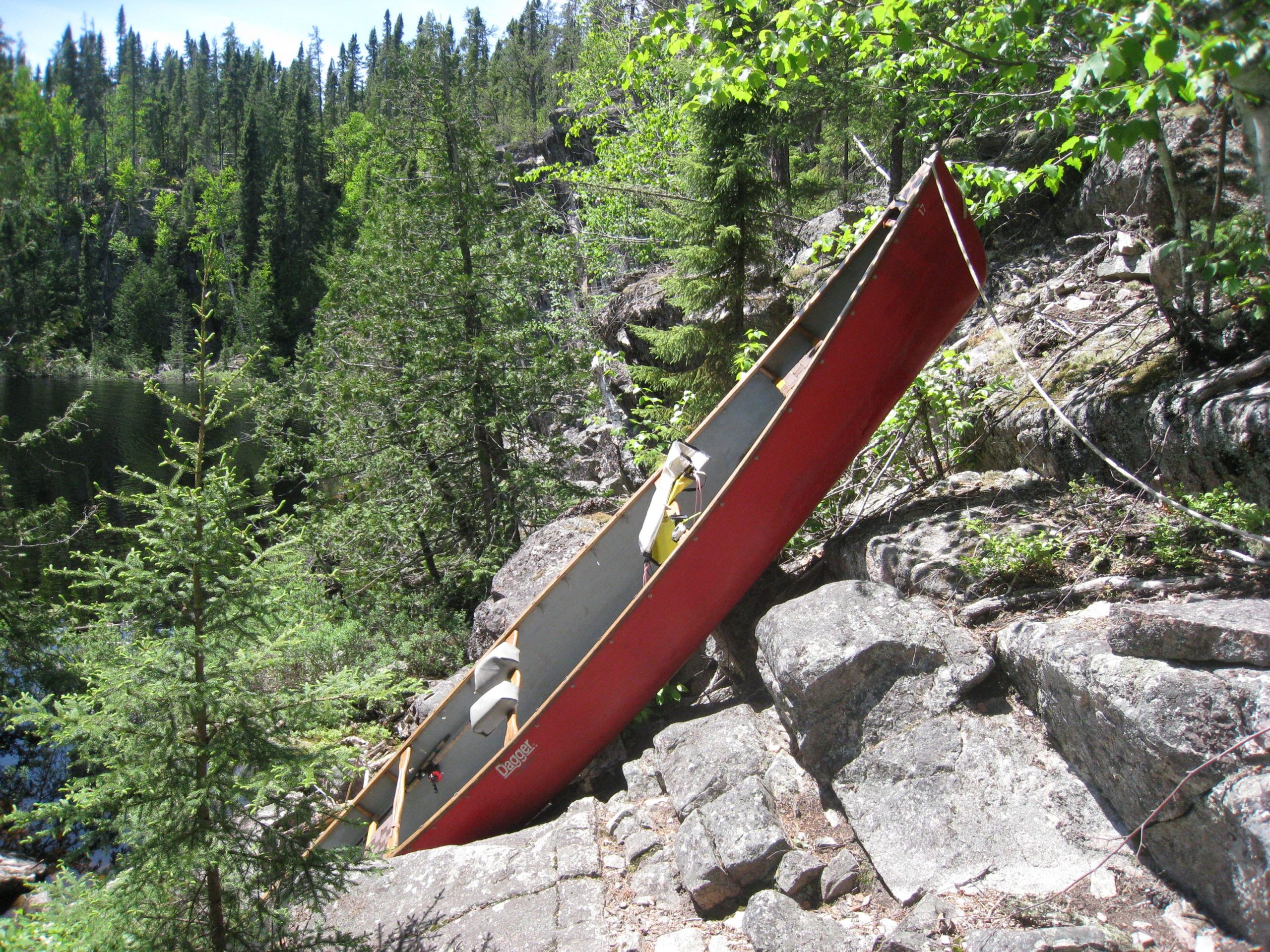
Portage following the first pitch of Wedding Cake Falls*
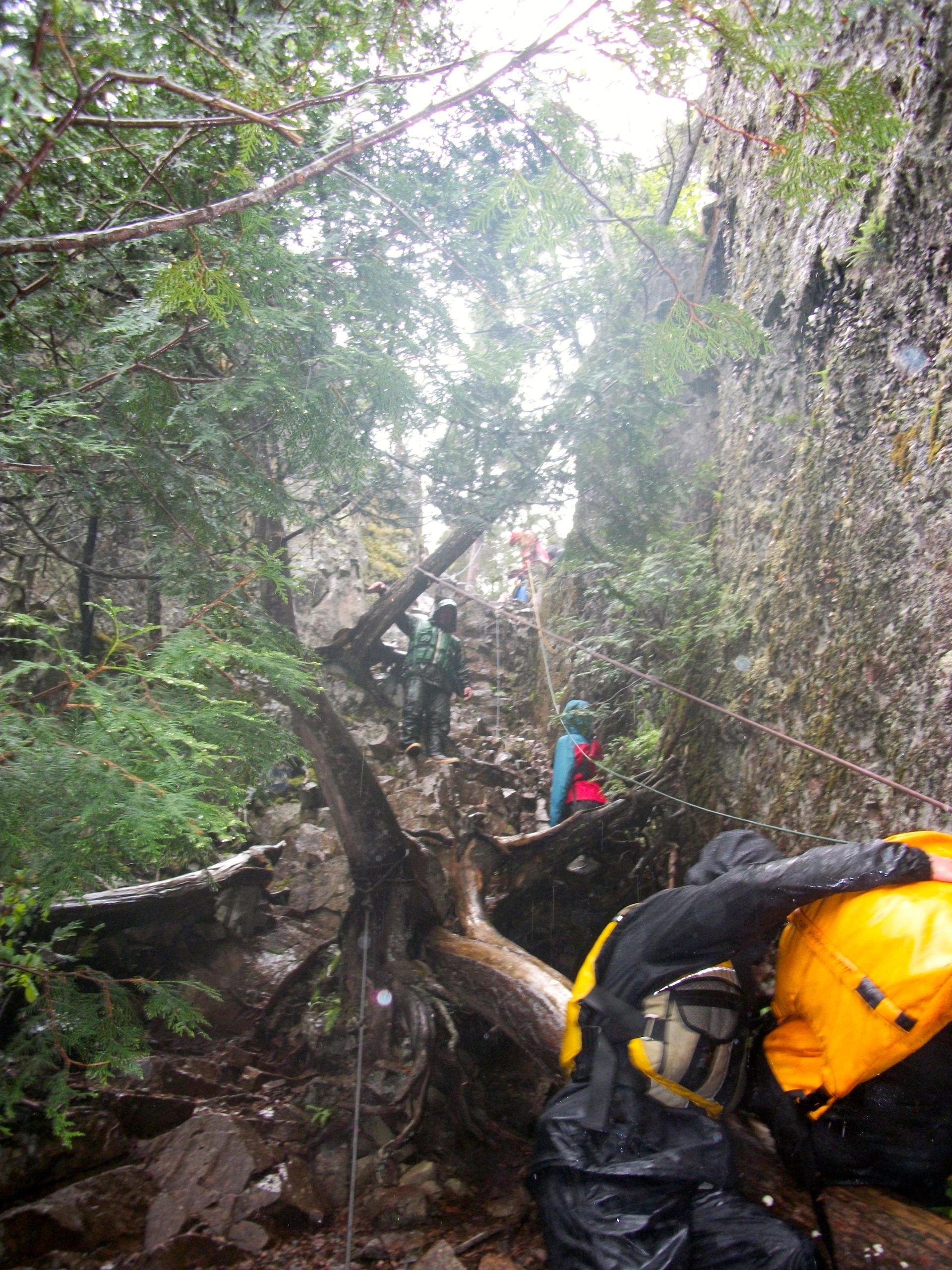
Dropping canoes (70 feet) via a 100 foot climbing rope. This is a MUST portage!
Dropping canoes (70 feet) via a 100 foot climbing rope. This is a MUST portage! “The only way out is downriver and you’d best know what you’re doing,” I told my Kopka River crew. Here, at “wedding cake falls” our isolation was guaranteed, or so I thought*.
Imagine my chagrin when halfway through the last portage (the 70 foot drop), I encountered a muscular man with a Kevlar™ Mad River Explorer canoe on his shoulders. An trim, gray haired lady carrying a light pack and two paddles dolefully walked a few paces behind.
“What on earth?” I muttered, as I jammed my canoe into a tree branch and stepped out to talk. The man grinned weakly and continued down the trail but the woman stopped cold and loudly pronounced, “My son is trying to kill me!” Then, she shucked off her pack and collapsed on a damp cedar log.
She was 62 years old but didn’t look a day over 55. She’d canoed the Boundary Waters and Quetico every summer as a child, and had passed on her love of wild places to her son, who was now in his late twenties. Over the years the pair had paddled many lake routes together. Now, it was time to try a real Canadian river. She had always planned the trips before, now it was his turn.
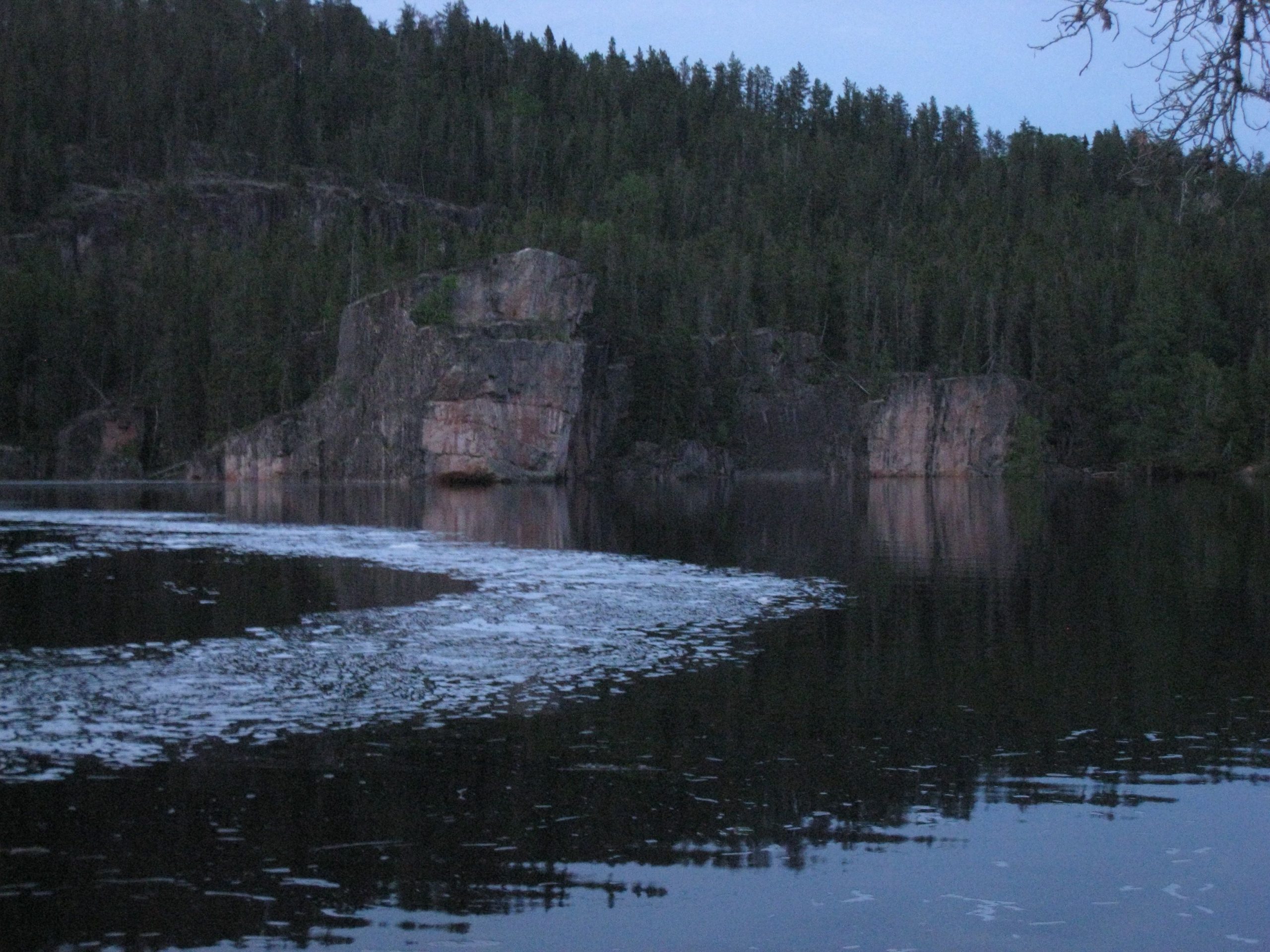
Large pool below drop 2 of Wedding Cake Falls*. My wife, Sue Harings dubbed this “The Land of The Lost.”
“I’m no spring chicken, but I can pull my weight if we go light,” she said. Then she told him to find a route that was beautiful and remote. Neither one had any white water experience so together they decided it would be safer to travel upstream. The man had heard about the wonders of the Kopka and the solitude of the falls. With light gear, we can make it, he told his mom.
In great detail, the lady told me how they had gotten the Kevlar™ canoe up the cliff. “Thank God someone left a rope there. Otherwise, we’d never have made it,” she said. She reported that it took several hours to get everything to the top of the cliff. “Maybe I can relax now that the hard part is over.”
At this, I told her about the second portage and asked her if they had a rope. “No, just parachute cord,” she agonizingly replied. Then, I told her about the first portage and the boulder field.
Again, she groaned and delivered another round of “My son is trying to kill me!”
Yesterday, high cirrus clouds foretold an approaching warm front and prolonged rain. For this reason, I rousted my crew at four a.m. with hopes we’d beat the weather. We did. Just as the last canoe was portaged, the darkened sky gave way to chilling rain.
As I put on my rain gear, I warned the woman of the boulders ahead and suggested they not attempt them in the rain. “Maybe you can crash out a campsite around here” I suggested, knowing full well that the dense vegetation prohibited it.
By now, the man had returned for the behemoth sized pack which sat along the trail. This, and two day packs comprised the entire kit for two weeks of travel in the Canadian bush.
“Got a rain tarp?” I asked, hopeful they could at least rig a shelter against the biting wind. “Nope. Never use one. Besides, there’s no room,” quipped the man. Then I asked if they had an axe and saw. Again, no.
“I think you’ll need a rope to get up the next portage,” I said, hopeful of convincing them to abandon the trip and go out with us.
“Got this far without one. We’ll make it,” said the man.
I shrugged a “whatever” and asked him to tell me about their route. The man described a loop which began at Bukemiga Lake, ran westward to Uneven Lake, then north beyond Aldrich Lake over the Canadian National Railroad line then east back to Armstrong. I had done two thirds of that route with husky high school kids ten years earlier and it had taken us eight very strenuous days.
“How long you out for?” I questioned. “Ten days,” came the reply. “Ten days? You gotta be kidding!” I admonished. It’s possible to do the route “downstream” in ten days, but only if you know the location of every portage. Took us hours to find the portages in here,” I said, pointing to the Aldrich Lake section.
At this, the man smiled courteously, zipped up his parka and called, “We better get going, mom before this rain gets worse.”
As she struggled into her pack, she called loudly, “Like I said, my son is trying to kill me!”
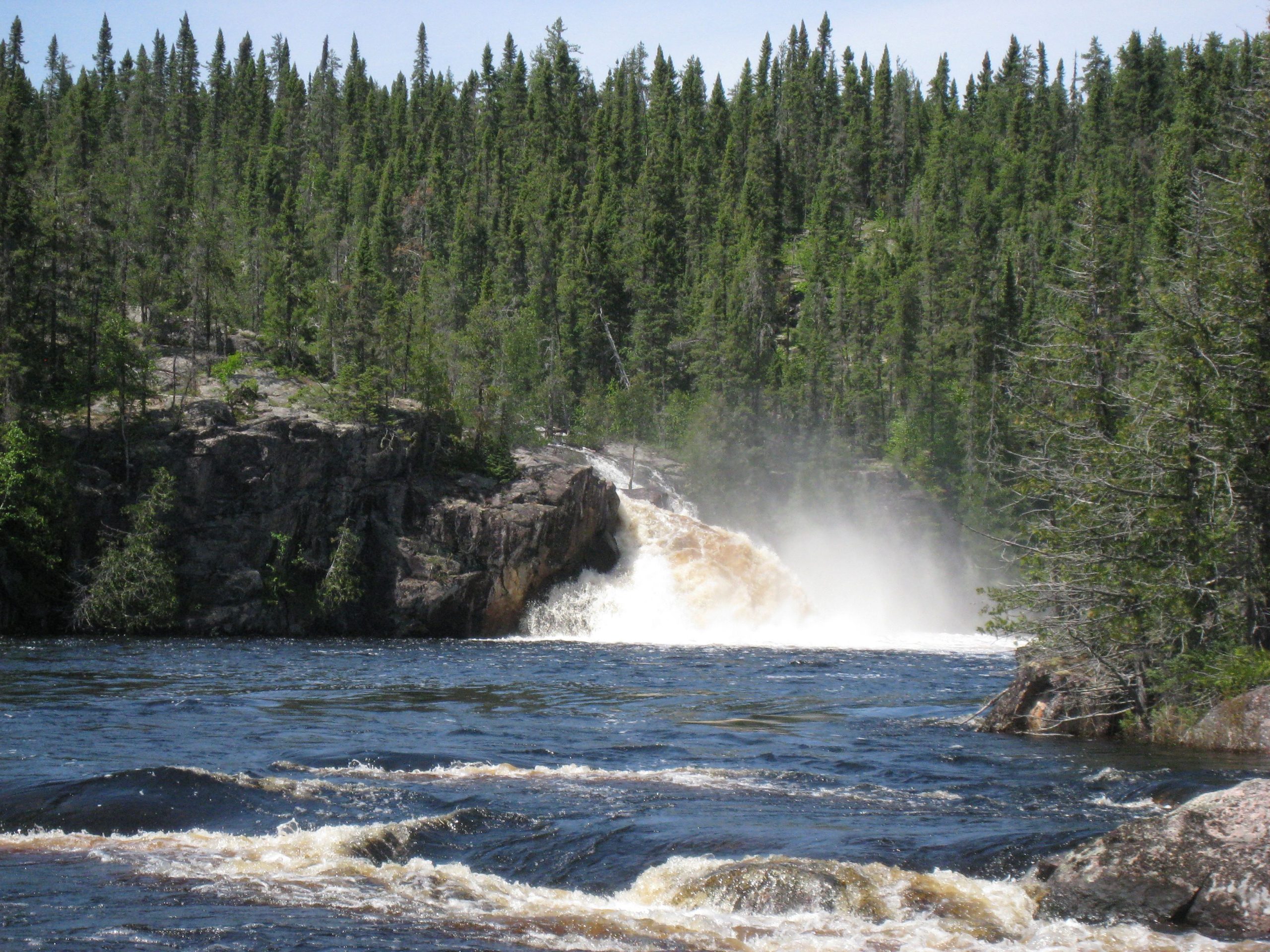
Drop 2, Wedding Cake Falls*
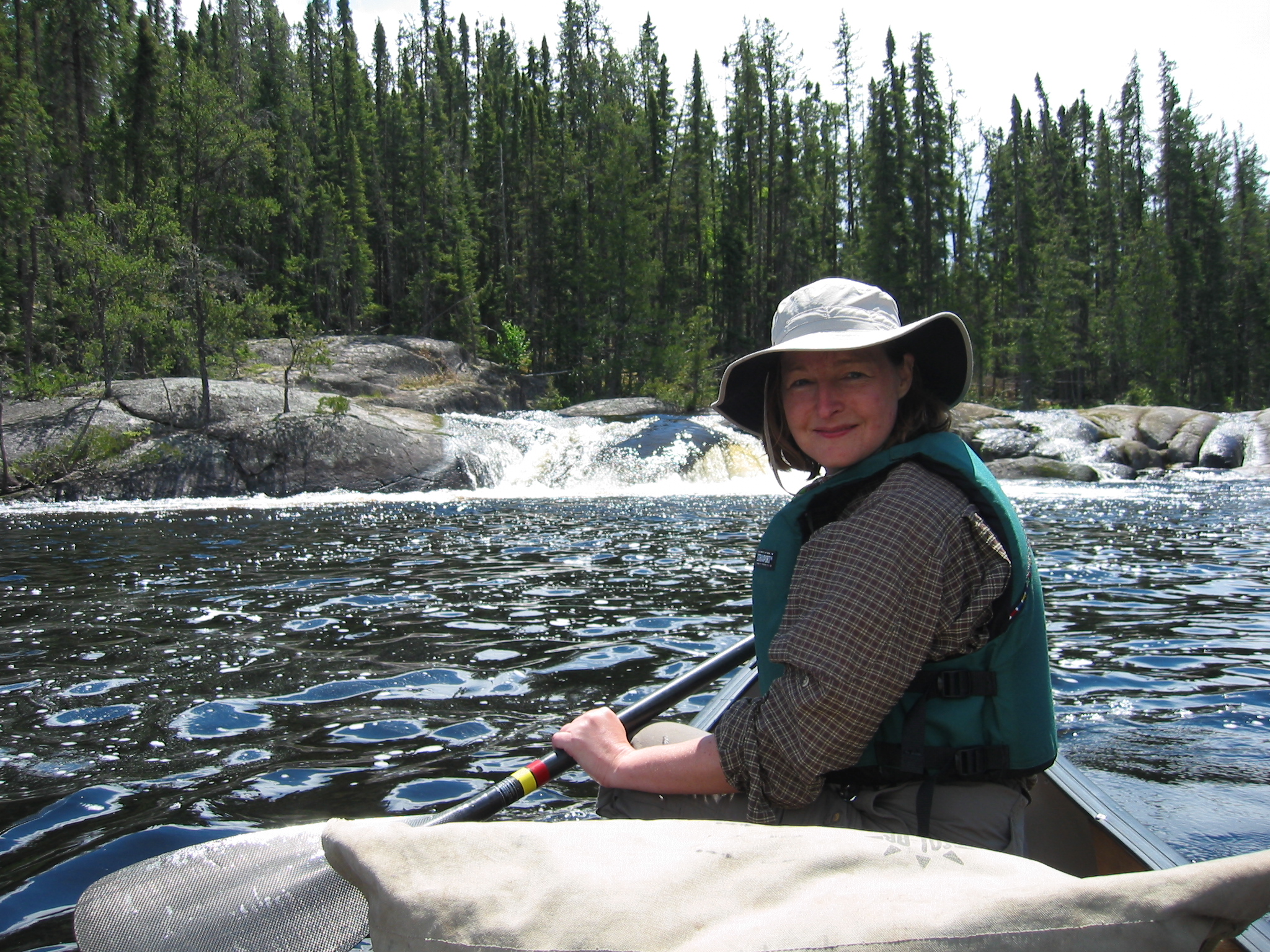
The base of Wedding Cake Falls*. Spectacular
It was a day’s paddle from the base of Wedding Cake Falls to the public landing at Bukemiga Lake and our awaiting van. As we posed for a final photograph, I told the woman who had shuttled our vehicle about the man and woman we had met on the Kopka. I asked that she share my concern with the charter float plane companies which serviced the area.
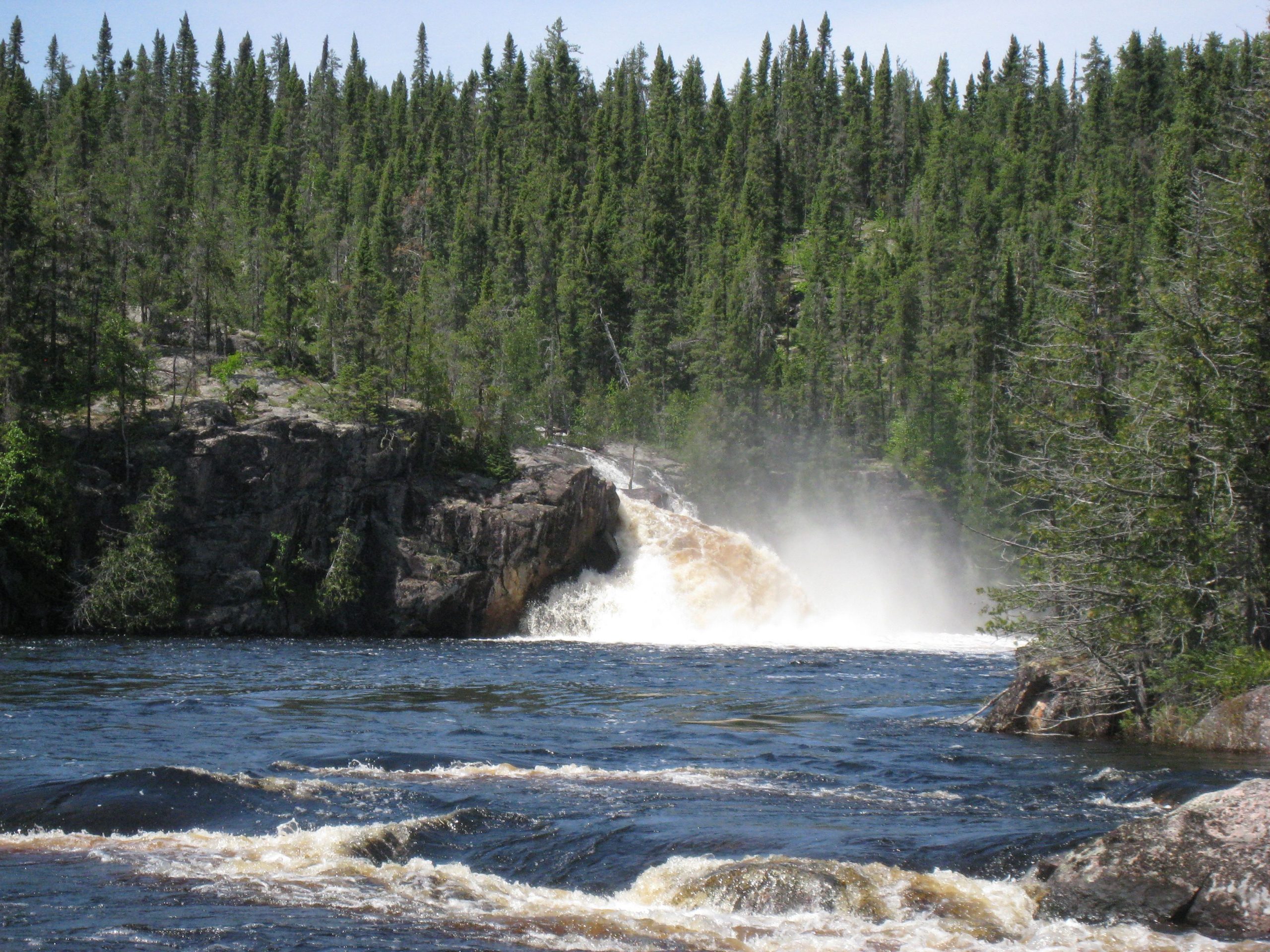
Below the final drop
Several months later I received a phone call from a crew member who had seen the woman at a canoe event in Minneapolis. She told him that disaster struck within hours after we parted. Her son had slipped in the boulder field of the first portage and sprained his ankle which became so swollen he could not walk without the aid of a makeshift crutch. Going back the way they had come was impossible. And so was staying put. Reluctantly, the pair decided to continue with their plans, hopeful they would run into a canoeist or fisherman who would help them out. But the remote route they had chosen skirted the casual canoe traffic and fly-in fishing trade. Their ten days passed and they saw no one
Remarkably, the pair made it as far as Aldrich lake before they collapsed in exhaustion. The man’s ankle had swollen to the point where he could not remove his boot. They ran out of food on the twelfth day then relied on fish which, fortunately, were easy to catch. In desperation, they lit a large smoky fire which they hoped would attract an airplane.
In late afternoon on the fourteenth day they heard the low thumping whir of a de Haviland Beaver. Quickly, they piled green branches on their campfire and said a prayer. Moments later, the plane touched down and rescued them. The pilot said that the woman’s daughter had called the police when her mother was overdue. However, all she knew was that her mom and brother were canoeing upstream on the Kopka. This, plus the sketchy information I had supplied initiated a search of the Aldrich Lake area. Ironically, several aircraft had flown over the couple earlier in the week but none had seen them. Their blue and green clothing and light gold Kevlar™ canoe were invisible from the air. It was the smoky fire that brought down the airplane.
The following spring, I saw the woman (who prefers to remain anonymous) at a canoe symposium in Minneapolis. When I asked her if she would ever do another Canadian river with her son, she replied: “No way! He has too much testosterone! Next time I’m going with my daughter: she has estrogen, the ‘gentle’ hormone.”
*There is no official name for these falls. Because of their spectacular beauty and layered look, my wife Sue Harings named it “Wedding Cake” falls. For awhile, we thought we wanted to get married here, but in the end we decided on Wilberforce Falls on the Hood River. See my story, “The Wilberforce Affair”, in my book, CANOEING WILD RIVERS, Fifth Edition, and in my long out-of-print book, *CAMPSITE MEMORIES.
*CAMPSITE MEMORIES is long out-of-print. It is available as an e-book and audio book on my website. This is one of many stories in that book.
My flagship book, CANOEING WILD RIVERS, 5th Edition, contains a wealth of advice on how to safely canoe difficult rivers.
My book CAMPING’S TOP SECRETS, 5th revision, details practical camping tips and procedures that only the experts know. If you know just a few of these tricks, you’ll be a hero to your friends!
My teen book, JUSTIN CODY’S RACE TO SURVIVAL! mixes a fictional wilderness survival tale with practical outdoor tips everyone should know–a first for books of this type. Adults love it too! Now available as an audio book!
*My long out-of-print book, CANOEIST’S Q&A (available as an e-book) contains 25 true scenarios (plus FAQ’s) that define the wilderness canoeing and camping experience–a great training tool for those who go beyond the beaten path – now available as an audio book under the new title PADDLER’S GUIDE: WHAT TO DO WHEN THINGS GO SOUR.
